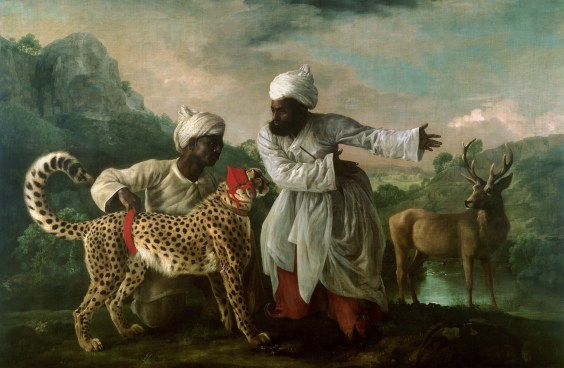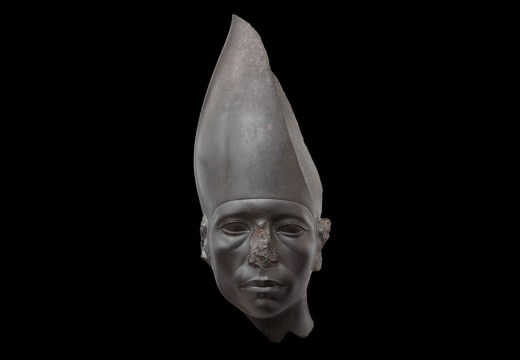Why has it taken so long for the Tate to get round to looking at the subject of empire in anything like a comprehensive way? Writing in his foreword to the catalogue of the new exhibition, ‘Artist and Empire’, Nicholas Serota – who has been in charge of the Tate group of museums since 1988 – admits that the show is overdue, but says Tate Britain has a unique mission to take on this project, as an institution ‘where national identity is explored and challenged’. How well the gallery normally does this might be open to question, but in this case it has produced a wide-ranging and intellectually stimulating exhibition that examines aspects of British identity that are all too readily suppressed or ignored.
‘It’s complicated’ say the team of curators, describing our relationship with our imperial past. They make an excellent job of demonstrating these complexities, showing how empire was a source of pride and prestige, but also guilt and shame.
Their approach has been to gather together a diverse range of visual material – around 200 objects – made in different countries and with various purposes, in order to show how empire was a cultural enterprise as much as one built on trade, military might and administration. To impose some limits on what could easily become a vast and unmanageable topic, all of the exhibits have been drawn from public and private collections in the UK. These holdings are now part of the legacy of empire and the exhibition provocatively investigates how Britain’s imperial memory is written into their histories and the changing status and meaning of the objects within them.
Take, for example, one of the highlights of the exhibition: Elizabeth Butler’s cautionary depiction of the disastrous outcome of the First Afghan War, The Remnants of an Army (1879). Part of the founding gift of the Tate, it was a popular work until the Second World War, but then became something of an embarrassment to post-imperial sensibilities and has been on long-term loan to a regimental museum for more than 50 years. It now returns with renewed significance following the UK’s more recent military actions in Afghanistan.
The exhibition includes some great names of British art: Van Dyck, Reynolds, Stubbs, Millais, Sargent. But rubbing up alongside are works from across the globe made by unnamed or little-known artists, some of which have come from ethnographic or anthropological collections. Among them are bronzes from the Edo people of Benin, Maori artefacts, Indian miniatures, flags made by Fante artists of the Gold Coast. Souvenirs, gifts, specimens, trade goods or plunder – each object tells a particular human story through the circumstances of its creation, display and acquisition. Their presence next to the culturally consecrated works of British art prompts us to question notions of authority, hierarchy and status on which the prestige of the Tate and similar museums depends.
The exhibition also explores the cultural exchanges that took place within the empire, giving rise to new forms of art and expression. How, for example, British artists and travellers brought exotic subjects and faraway events within the conventions of European art; but, conversely, the way the indigenous art traditions of overseas territories adapted to the British presence. Imperial mastery relied on techniques of translation, assimilation, hybridisation and mimicry, and although the exhibition presents these exchanges as creatively fruitful, they often also betray imbalances of power and oppressive cultural distinctions.

Mahadaji Sindhia entertaining a British naval officer and military officer with a Nautch (c.1815-20), Anonymous Delhi School. British Library
Where the exhibition falters is in the final two rooms, which address the end of empire, decolonisation and post-imperial Britain. This is also the point in the chronology where we move from historical art into modernism: a transition that Tate Britain regularly stumbles over.
Ironically, the problem arises from the same sort of juxtapositions that are so effective in earlier sections of the show. Here the approach dilutes what could have been a forceful exploration of the way art and artists from Britain’s former colonies were marginalised within the art movements of the 20th century. Ideas around the Western appropriation of non-European culture as a ‘primitive’ or exotic aesthetic resource, or the revival of local art traditions within nationalist independence movements, are touched on but not fully developed.
This part of the exhibition includes a number of works by Black and Asian artists who came to Britain from the former Empire after the Second World War. Despite achieving international recognition, Ben Enwonwu, Ronald Moody, Aubrey Williams and Avinash Chandra were slow to be embraced by the British cultural establishment. Deemed insufficiently British to claim a place within the national school, but insufficiently cosmopolitan to be fully inducted into the club of Western modernism, their marginalisation is symptomatic of pervasive prejudices about post-imperial identities. With the exception of Avinash Chandra’s Hills of Gold (1964), which was given to the Tate in 1965, all the other works by post-war Black and Asian artists from the museum’s collection shown here were belatedly acquired after 2000.
The exhibition concludes with Donald Locke’s Trophies of Empire (1972–4), a work that attained iconic status for a generation of artists in the 1980s, and was acquired by the Tate in 2015. Comprised of rows of featureless black cylindrical objects arranged as if in a museum display case, it encapsulates and questions much of what has gone before: the presentation of imperial spoils, the fetishisation of non-European art, but also the persistence of aesthetic distinctions that remains one of the potent legacies of empire.
As a museum established in 1897 at the apogee of Empire, and one whose role through much of 20th century has been to police the limits of British art, the Tate is heavily implicated in the cultural practices it explores here. A reticence to scrutinise its own institutional history may account for the loss of conviction in the later stages of the show, and perhaps explains its reluctance to approach the topic of empire in the first place. Late in coming and with some weaknesses, ‘Artist and Empire’ nevertheless counts as a considerable achievement in intelligently addressing a difficult subject and raising some challenging questions about the way we value and understand our shared imperial past.
‘Artist & Empire: Facing Britain’s Imperial Past’ is at Tate Britain, London, until 10 April 2016.
Unlimited access from just $16 every 3 months
Subscribe to get unlimited and exclusive access to the top art stories, interviews and exhibition reviews.
















![Masterpiece [Re]discovery 2022. Photo: Ben Fisher Photography, courtesy of Masterpiece London](http://www.apollo-magazine.com/wp-content/uploads/2022/07/MPL2022_4263.jpg)
It’s time for the government of London to return to its rightful home